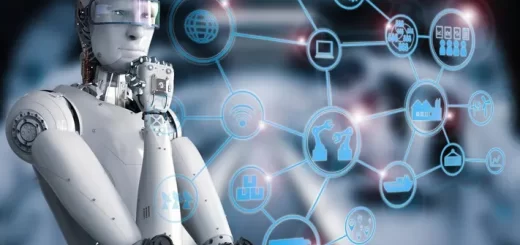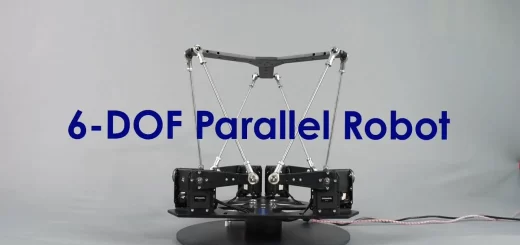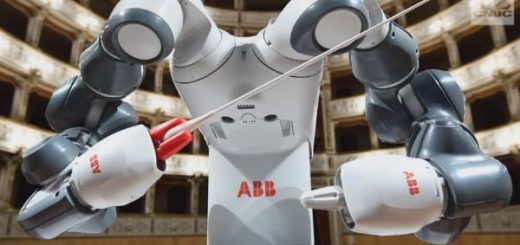Artificial Intelligence in Agriculture advantages, disadvantages and uses
Artificial Intelligence can improve agricultural productivity, It can identify diseases in plants, It can recognize crop diseases & pest damage, The success was that AI can identify a disease with 98% accuracy, AI gives growers a weapon against cereal-hungry bugs, Sensors monitor the fruit’s progress toward perfect ripeness, adjusting the light to accelerate or slow the pace of maturation, This kind of farming requires considerable processing power.
Artificial Intelligence in Agriculture
AI-powered technologies are used in several industries in the world today; finance, transport, energy, healthcare and now agriculture, Farmers can monitor the well-being of their crops or the movement of their animals without the need to go into the farm, agriculture is undergoing a radical transformation thanks to advancement in Artificial Intelligence (AI) technology, robotics & AI are reordering what we know about agriculture, making it less labor intensive, and more efficient.
AI-powered solutions will improve quality & ensure faster go-to-market for crops, Agriculture is both a major industry & foundation of the economy, many factors such as climate change, population growth and food security concerns have propelled the industry into seeking more innovative approaches to protect and improve crop yield, so, AI is steadily emerging as part of the industry’s technological evolution.
Artificial intelligence offers data sources such as temperature, precipitation, wind speed, and solar radiation, along with comparisons to historic values for anywhere on the agricultural earth, Although Artificial intelligence won’t eliminate the jobs of human farmers, it will improve their processes and provide them with more efficient ways to produce, harvest and sell essential crops.
Advantages of AI in Agriculture
Agriculture is becoming digital, AI in agriculture is emerging in three major categories which are agricultural robotics, soil & crop monitoring, and predictive analytics, Farmers are using sensors and soil sampling to collect data and this data is stored on-farm management systems that allow for better processing & analysis.
Machine learning provides clients with a sense of their soil’s strengths and weaknesses, The emphasis is on preventing defective crops and optimizing the potential for healthy crop production, the growth in AI technology has strengthened agro-based businesses to run more efficiently.
Artificial intelligence helps farmers get more from the land while using resources more sustainably, the farmer can save corn from grasshoppers by using AI to detect a swarm in an unexpected parcel of his field, A robotic lens zooms in on the yellow flower of a tomato seedling, Images of the plant flow into an artificial intelligence algorithm that predicts how long it will take for the blossom to become a ripe tomato ready for picking & packing.
One of the main items is the use of machine learning which represents a unique subset of algorithms within artificial intelligence, Machine learning is simply the ability of a computer to learn how to do things better or evolve without really being directly programmed by a person, computer programming, or algorithms, start with a basic ability to perform a certain task.
Machine learning is not only being used to help recommend seeds, the technology is also being applied in one way or another in applications such as Automated machine adjustments (combine, planter downforce, etc.), Weather forecasting, Disease or pest identification, image recognition, Disease and pest movement, Machine maintenance and break-down prediction, Field accessibility or harvest advisory type estimations, Irrigation and water management, Nutrient use and fertility recommendations, Autonomous machines or robots.
One other important aspect of AI to keep in mind is the data itself, people understand why many companies are interested in farmers sharing data with them, Anyone developing these machine learning algorithms needs tremendous amounts of data to train their systems, otherwise their product could be less accurate than a competitor with more data, This shows why some people have been describing data as a new form of currency.
While AI is still a fairly recent technology, it has already made its way to mobile technology, Phone cameras can now recognize the image they are taking and adjust the camera settings accordingly, AI systems have the potential to solve some of the biggest challenges farmers are grappling with such as climate change, infestation of pests and weeds and reduced yields.
The collars are implanted with transponders that can tell when a cow is ready for milking and connect with machines that do the milking automatically, Artificial intelligence can improve plant breeding and crop management practices, many tech companies invest in algorithms that are becoming useful in agriculture, They use natural language toolkit for field notes, and yield prediction algorithms based on satellite imagery.
A robot called See & Spray reportedly leverages computer vision to monitor and precisely spray weeds on cotton plants, Precision spraying can help prevent herbicide resistance, The cameras & sensors use machine learning where the images are captured and the machines can be taught in different weeds, Then the right herbicides are sprayed precisely as per encroachment area.
Disadvantages of AI in Agriculture
Although Artificial intelligence improves the agriculture industry in many amazing ways, there are many concerns regarding the forthcoming of AI on employment and the workforce of the agricultural sectors, Agriculture is a $3 trillion industry that employs over 1.5 billion people, which is a whopping 20% of the world’s population, There are predictions of there being millions of unemployed field workers in the next decades primarily due to the impact of AI in the agriculture industry.
Field tasks which are monotonous can be easily automated this can gradually make certain roles obsolete, Humans will be replaced by smart robots that can safely navigate the space, find and move agricultural products as well as perform simple and complex field operations.
The cost of technology such as drones has made it unavailable outside of the government and research bodies, It is costly to buy the drones, the biggest challenge will be funding internally from the government efforts and research institutions.
Agricultural robots advantages and Disadvantages
Automatic milking or Robotic milking advantages and disadvantages
Applications of Artificial intelligence in agriculture, Agricultural robots, Drones & Plantix app



